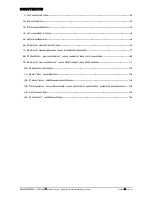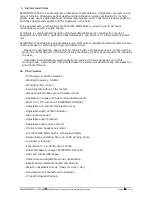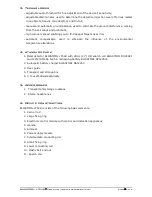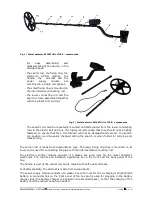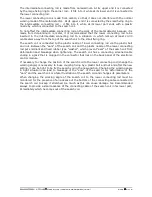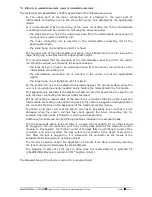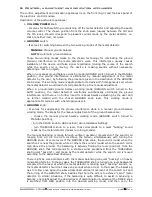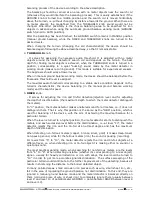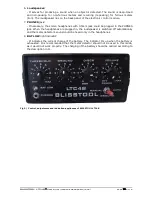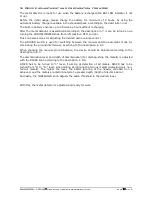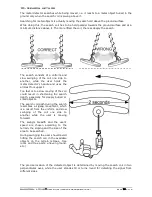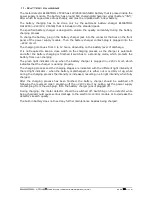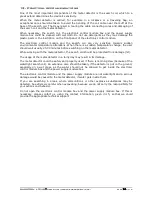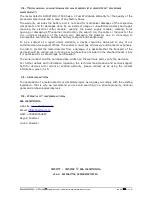
8. Control, adjustment and indication appliances
The control, adjustment and indication appliances lie on the front (Fig.3) and the back panel of
the electronic control module.
Description of the particular appliances:
1.
VOLUME/POWER
knob:
- It serves for both switching on/switching off the metal detector and adjusting the audio
volume control. The chosen position from the knob scale (usually between the 3rd and
the 5th level) should correspond to pleasant sounds made by the metal detector, i.e.
that are neither loud, nor quiet.
2.
GROUND
switch:
- It serves for switching between the two working modes of the metal detector:
MANUAL
: Manual ground balance
AUTO
: Automatic ground balance
Those two working modes relate to the chosen technology for eliminating the ground
(terrain) interference on the metal detector’s work. This interference usually causes
instability of the device and false signal registration (during the course of the search
while the search coil is moving, the device is making sounds without necessarily
detecting a real iron object).
When in a manual ground balance working mode (GROUND switch turned to the MANUAL
position), the ground interference is eliminated by manual adjustment of the metal
detector by the user, by following the procedure given in the description of the GROUND
knob below. This working mode is appropriate for terrains with homogeneous soil, where
the metal detector would reach its full potential by a fine manual adjustment.
When in an automatic ground balance working mode (GROUND switch turned to the
AUTO position), the metal detector’s electronics automatically eliminates the ground
interference and there is no further need for manual balance adjusting by the user and
no further relation with the chosen GROUND knob level. This working mode is
appropriate for terrains with a heterogeneous soil.
3.
GROUND
knob:
- It serves for suppressing the ground interference while in a manual ground balance
working mode. The steps for the manual adjustment of the ground balance are:
- choose the manual ground balance working mode (GROUND switch turned to
MANUAL position);
- turn the DISCR knob to GBS position (Ground Balance Setting);
- turn THRESHOLD knob to a level, that corresponds to a quiet “buzzing” sound
made by the metal detector (makes recurring sounds).
The manual balancing is made through vertical (up-down) movement of the search coil
ranging from 2-3 cm to 20-25 cm above the terrain, simultaneously with turning the
GROUND knob. At some levels of the GROUND knob scale, the sound is louder when the
search coil is near the ground, while at others the sound is louder when the search coil is
high above the ground. The balancing is actually finding the level (position) from the
GROUND knob that corresponds to a stable sound, predefined from the THRESHOLD
knob (quiet “buzzing”), and made by the metal detector while the search coil is moved
according to the above described way.
There might be some problems with the manual balancing via quiet “buzzing” on heavily
mineralized terrains. In these cases, the THRESHOLD knob is turned one level backwards
compared to the level at which the metal detector is making quiet “buzzing” sounds, i.e.
the metal detector should not make any sounds while at rest. In that case, the balancing
has to follow once again the above-described vertical movement of the search coil and
the turning of the GROUND knob, besides that here the aim is to achieve “silent” metal
detector. In similar situations, if the balancing is quite difficult, to assist in achieving a
balance, one might adjust the desired level of discrimination in advance (the DISCR knob
is switched from GBS position into the desired working mode) and then carry the
BLISSTOOL LTC48 –
User Guide (version EN200908131904)
Page 8 of 15


